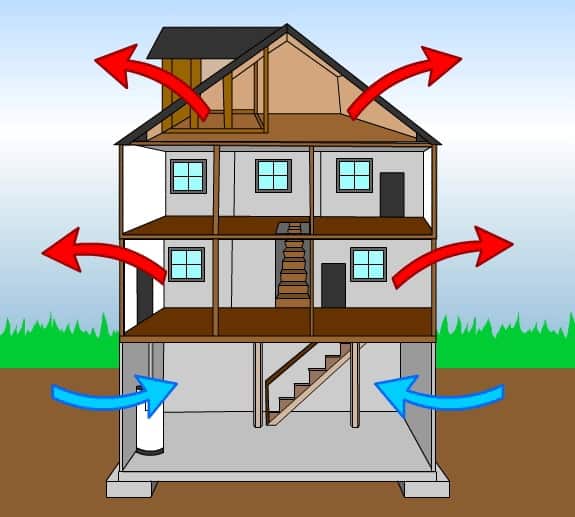
Home Fixes
|Sustainability
What Have You Been Breathing?
When it comes to our homes, we sometimes take it for granted that with a little upkeep we can maintain healthy, safe environments for our family. But did you know that at any given time, up to 50% of the air you’re breathing on the first floor of your home comes from the crawlspace?
This comes from what is known as the “stack effect,” where normal air moves from the bottom and sides of the home to the upper part of the home (see diagram, above).
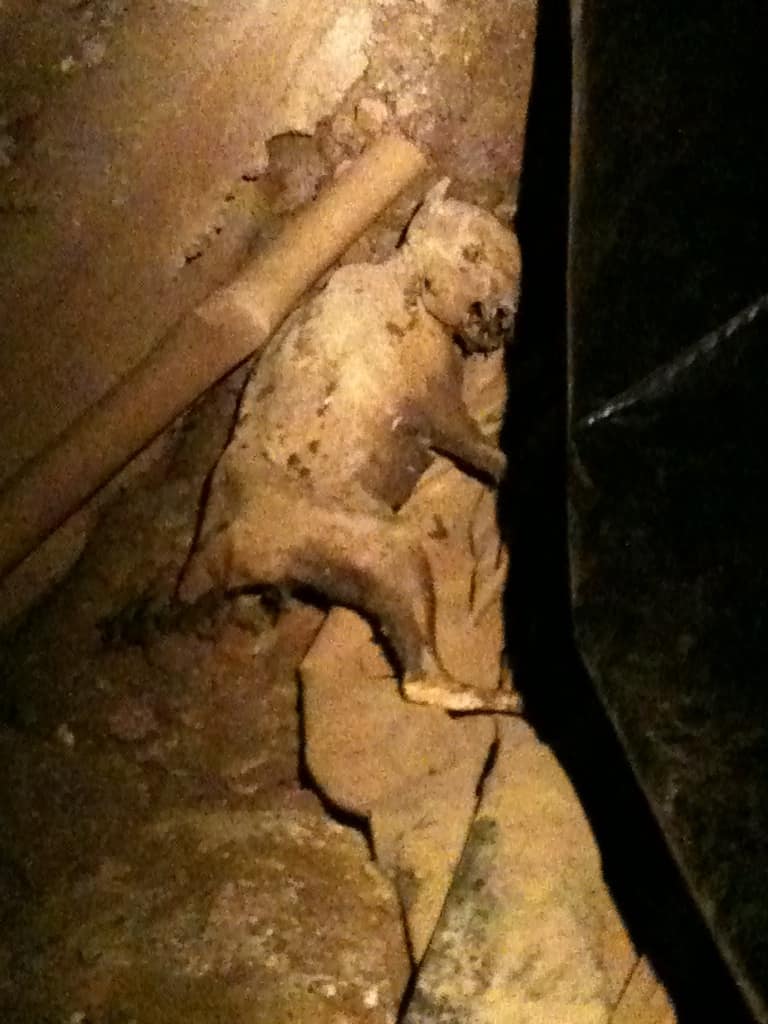
Mummified critter
As air is heated, it rises upward, exiting through the attic and upper levels. As air seeps out of the upper levels, a vacuum is formed below, which is filled with outside air, as well as air from your crawlspace or basement.
What you don’t see could be harmful
Depending on the condition of your crawlspace, you could be breathing in mold spores, dust, and anything else — like the poor critter at right — that has found its way under your floors. Obviously, not all homes are going to attract wildlife, but dirt floors and open vents are not going to help your indoor air quality. Some of the nasty effects include:
-
- Musty Odors
- Toxic Mold
- Bugs, dust mites, and rodents
- Odors in upholstery and carpets
- Swollen doors and windows
- Cupping wood floors
- Increase in heating bills
- Health risks, from allergies to cancer (from radon)
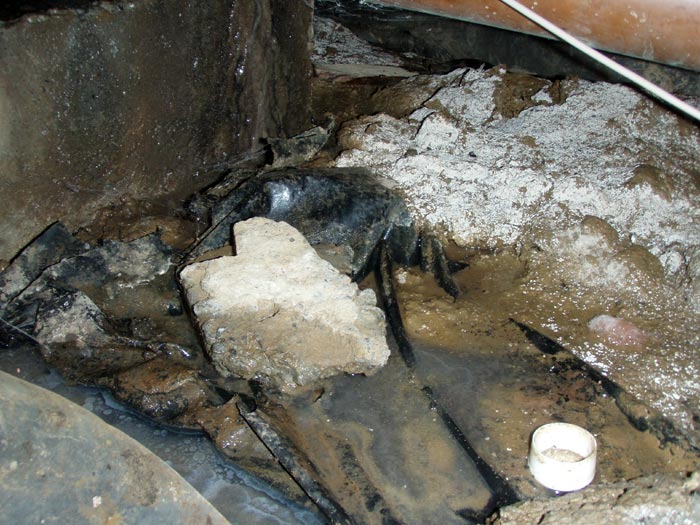
Mold growing in crawl space
“I thought aerated crawlspaces were a good thing!”
Previously, building aerated crawlspaces was considered standard practice; open vents were used to dry moisture that came in during the winter. But this was from a time before tighter, insulated homes, and before central air conditioning.
What we know now is that on summer days there is enough moisture in the air that when it passes into the cool crawlspace the temperature decreases and the moisture content then approaches 100%. Much of the masonry and wood surfaces in your crawlspace are cool enough to condense the water vapor, turning it to liquid.
Okay, I’m grossed out. What do I do?
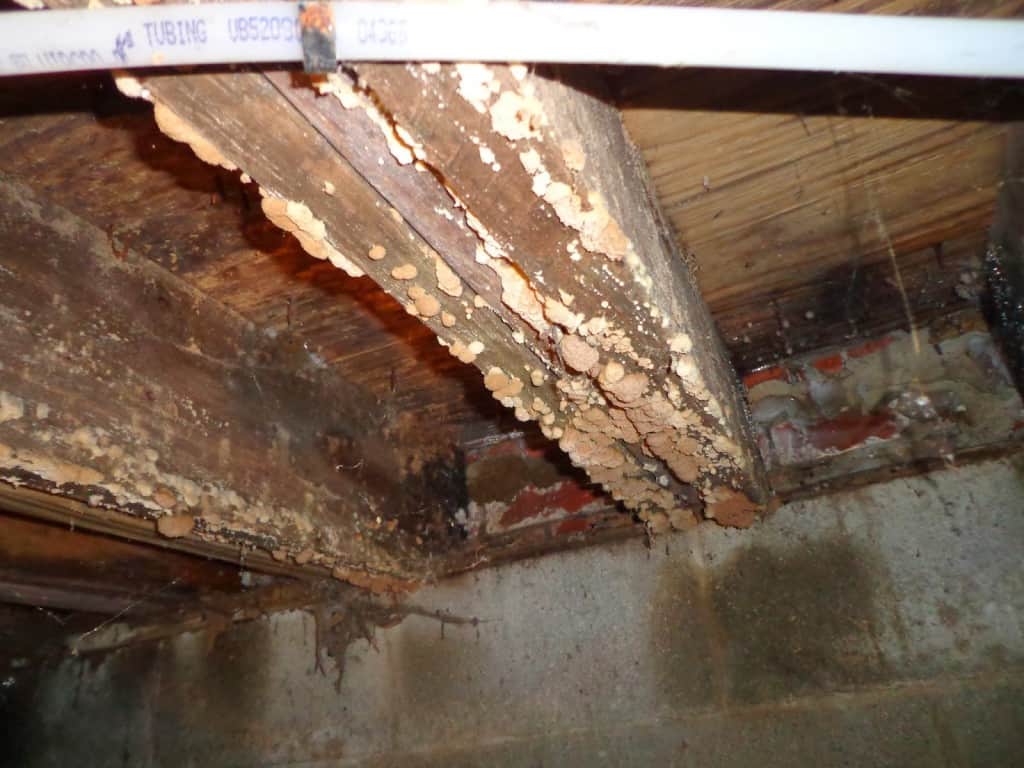
Fungus growing on floor joists
So what happens if you have open vents in your crawlspace? Or a dirt floor that can harbor other bacteria? You will want to seal off all vents and encapsulate the crawlspace to avoid extra moisture, exterior particulate matter, and other conditions that can breed mold, cause dust, and invite more bacteria. Encapsulating can also keep away any rodents or larger critters that can pollute your indoor air quality.
Encapsulation: Key to healthier air
Encapsulating your space — which any home energy team such as Neil Kelly’s Home Performance team can do — means turning your crawlspace into properly conditioned indoor space the same way that you would protect your basement if remodeling. This means sealing all vents to keep the area dry, covering any earthen floor with a floorliner that serves as a vapor barrier, and insulating and covering the walls for more upper home comfort and healthier air.
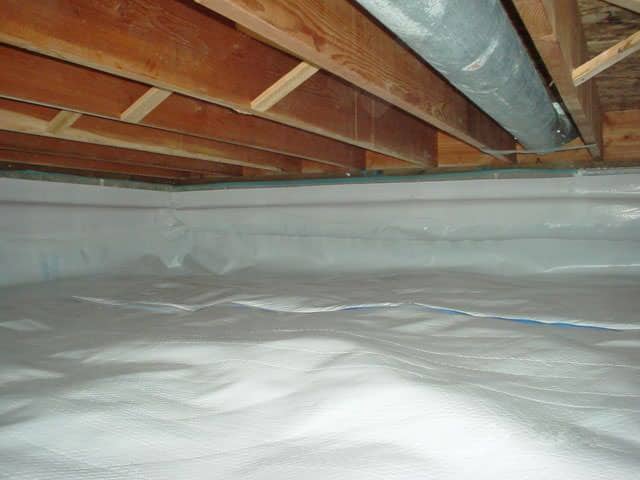
Encapsulated crawlspace for healthier air, more comfort and energy savings!
If you live in an area with known radon concentrations, consider having your home tested. Radon, an odorless gas, emanates from the soil under and around the home, including – you guessed it – the crawlspace, where it could be more concentrated. Radon mitigation has become a simpler process, often as easy as installing a pipe from the earth below the home to the top of the home to exhaust radon-laden air.
Nothing is more important than the health and safety of your family. That’s why Neil Kelly offers a full array of home improvement services to keep your family safe and secure. Offerings include seismic retrofits, radon testing and abatement, and indoor air quality assessment and improvement. Connect with one of our specialists today!